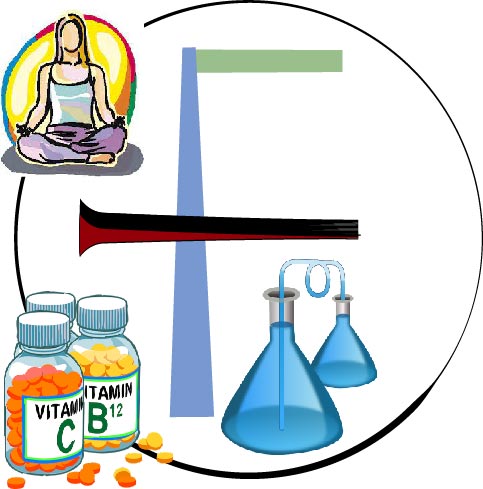HPLC
High Performance Liquid Chromatography (HPLC)
An analytical separation technique that involves the high-pressure
flow of a liquid through a column that contains the stationary phase.
Stationary phase: Can be a solid (LSC) or a liquid (LLC)
A mixture of compounds injected at one end of the column
separates as the compounds pass through.
Separated compounds are detected electronically as they
elute at the other end of the column
Instrumentation
1) Solvent or mobile phase
Major components
Usually a mixture of an organic solvent (Ex. methanol, IPA)
and water
Sometimes buffered – keeps solutes in electrically neutral form
Solvent polarity affects the separation process
Mobile phase considerations
Must be filtered (to prevent tiny solids from depositing at the
column head) and degassed
Degassing is done by helium sparging
Bubbles could interfere with detection
Pump
Role is to pump the solvent at a high pressure (usually from
1000 to 6000 psi) through the packed column
Injector
Sample introduction system
Usually a loop injector – see image below
Introduces the injected sample to the flowing mobile phase
Automated injectors are common
Column
A small metal tube (typically 5 to 30 cm long; 1-5 mm i.d.)
that contains the stationary phase
Instrumentation (Cont.)
Role is to separate the components of a mixture
Column – Cont.
Much shorter than columns used in GC — Why?
Highly efficient separations achieved in HPLC due to
interactions of both m.p. and s.p. with the components of
a mixture
vs. GC, where only the s.p. interacts with
components
No need for long columns
Column Oven:
This allows the separation of individual sample components to be controlled and optimised. Columns come in two types: packed and capillary . Most gas chromatography today is performed using capillary columns, as they offer significant advantages for most samples
Detector
Different design from those of GC detectors because the
components are dissolved in a liquid m.p. (vs. gas in GC)
HPLC Column Selection
Dependent on the:
(1) type of mixture being separated, and
(2) type of interaction with the s.p
HPLC Bolg
Accuracy – Analytical method validation, hplc, pharmaceutical
by maheshbhuva | Dec 25, 2022 | Analytical Chemistry, Hplc, Method validation
Accuracy is also part of method validation different place Different terminology used for accuracy like recovery, truth value, biaus etc
Specificity -Analytical Method validation in pharmaceutical company
by maheshbhuva | Dec 25, 2022 | Hplc, Method validation
Specificity -Analytical Method validation
HPLC COLUMN – FACTOR AFFECTS,During HPLC analysis
by maheshbhuva | Dec 22, 2022 | Hplc, Hplc column
1) Partial Blockage of column 2) Adsorption of sample impurities inside column surface 3) Poorly packed stationary phase. 4) Mechanical or thermal shocks during Handling. 5) Chemical attack on the stationary phase. https://www.frontlifesciences.com/qualitycontrol-qc/...
What is Internal standard HPLC / GC- How to USE
by maheshbhuva | Dec 14, 2022 | Gc, Hplc
Internal standard how we have to used? Internal standard 1. Quantities analysis 2. Purpose is 3. Selection process 4. Example is Quantities analysis main three parts • External standard • Internal standard • Standard addition External standard Here we find...
What is different between ODS and BDS column in hplc?
by maheshbhuva | Dec 12, 2022 | Analytical Chemistry, Hplc, Hplc column, Pharmaceutical interview,
ODS column contains FREE -OH group in silica BDS column contains DEACTIVATE -OH group in silica
HPLC System suitability parameter
by maheshbhuva | Dec 11, 2022 | Hplc, Job interview
% RSD(Related standard deviation)/repeatabilityColumn efficiency / Theoretical plateResolutionPeak to valley ratioCapacity factorSignal to noise ratio (S/N ratio)References standard check (Similarity factor or SF factor)Retention time#HPCL #highperformance...
What is dead volume in HPLC?
by maheshbhuva | Dec 11, 2022 | Analytical Chemistry, Hplc, HPLC VIAL, Pharmaceutical interview,
Elute are found from initial column to detecter call dead volume#HPLC #GC #IR #autotitration #ph #conductometry #calibration #calibrationHPLC #highperformanceliquidchromatography #detector #detectorsusedinhplc #detectorsusedgc #gaschromatography #principle #TLC...
